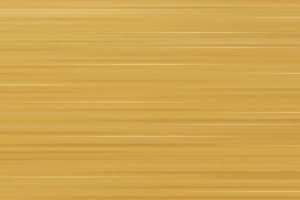Podcast
Questions and Answers
How does the concept of motion relate to a reference point?
How does the concept of motion relate to a reference point?
Motion is defined by an object changing its position with respect to a reference point and time.
Explain the condition for an object to be considered 'at rest'.
Explain the condition for an object to be considered 'at rest'.
An object is at rest when it does not change its position with time.
What is the key difference between 'distance' and 'displacement'?
What is the key difference between 'distance' and 'displacement'?
Distance is the total path covered by an object, while displacement is the shortest distance between the initial and final positions.
Define 'magnitude' in the context of physical quantities.
Define 'magnitude' in the context of physical quantities.
Under what condition can displacement be zero even if an object has moved?
Under what condition can displacement be zero even if an object has moved?
Imagine an object moving in a circle. After completing one full revolution, what is its displacement?
Imagine an object moving in a circle. After completing one full revolution, what is its displacement?
A car travels 5 km east, then 5 km west. What is the total distance traveled, and what is the displacement?
A car travels 5 km east, then 5 km west. What is the total distance traveled, and what is the displacement?
Explain how an object can be in motion relative to one reference point but at rest relative to another.
Explain how an object can be in motion relative to one reference point but at rest relative to another.
If you know the initial and final positions of an object, what information do you need to find the distance it traveled?
If you know the initial and final positions of an object, what information do you need to find the distance it traveled?
Why is it important to specify a reference point when describing the motion of an object?
Why is it important to specify a reference point when describing the motion of an object?
Give an example of a situation where the magnitude of the displacement is equal to the distance traveled.
Give an example of a situation where the magnitude of the displacement is equal to the distance traveled.
Describe a situation where you might want to know the distance an object traveled, rather than its displacement.
Describe a situation where you might want to know the distance an object traveled, rather than its displacement.
Explain why displacement is considered a vector quantity, while distance is a scalar quantity.
Explain why displacement is considered a vector quantity, while distance is a scalar quantity.
How does the concept of 'rest' relate to the idea of a frame of reference?
How does the concept of 'rest' relate to the idea of a frame of reference?
Provide an example of an object that is simultaneously in motion and at rest, depending on the reference point.
Provide an example of an object that is simultaneously in motion and at rest, depending on the reference point.
A runner completes 400m race around an oval track, ending at the same place they started. What was the runner's distance and displacement?
A runner completes 400m race around an oval track, ending at the same place they started. What was the runner's distance and displacement?
If you are given only the magnitudes of several displacements, what additional information do you need to determine the magnitude of the total displacement?
If you are given only the magnitudes of several displacements, what additional information do you need to determine the magnitude of the total displacement?
Why is understanding the difference between distance and displacement important in navigation?
Why is understanding the difference between distance and displacement important in navigation?
How does the concept of magnitude apply differently to scalar and vector quantities? Give examples of each.
How does the concept of magnitude apply differently to scalar and vector quantities? Give examples of each.
Explain why the phrase 'as the crow flies' is more closely related to displacement rather than distance.
Explain why the phrase 'as the crow flies' is more closely related to displacement rather than distance.
Flashcards
Motion
Motion
An object is said to be in motion when it changes its position with respect to a reference point and time.
Rest
Rest
An object is said to be at rest when it does not change its position with time.
Distance
Distance
The total path covered by an object during its motion.
Magnitude
Magnitude
Signup and view all the flashcards
Displacement
Displacement
Signup and view all the flashcards
Displacement and Object Movement
Displacement and Object Movement
Signup and view all the flashcards
Study Notes
- Chapter 7 notes on motion in physics
Motion
- An object is said to be in motion when it changes its position, with respect to a reference point and time
Rest
- An object is said to be at rest when its position does not change with time
Distance
- Distance refers to the total path covered by an object
Magnitude
- The numerical value of a physical quantity is its magnitude
Displacement
- Displacement is the shortest distance measured between the initial and final position of an object
- Even if an object has moved, its displacement will not necessarily be zero
- Displacement is the shortest distance between the initial and final positions of an object
Studying That Suits You
Use AI to generate personalized quizzes and flashcards to suit your learning preferences.




